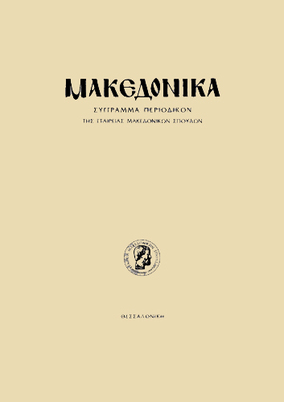Οι εβραϊκές συνοικίες των Βρόχθων, Rogos και Ομφαλού
Part of : Μακεδονικά ; Vol.30, 1996, pages 1-41
Issue:
Pages:
1-41
Parallel Title:
The Jewish Quarters of Vrochthoi, Rogos, and Omfalos.
Section Title:
Articles
Abstract:
n the Book of the Miracles of St Demetrius (188) reference is made to the «Vrochthi quarter», an area for which no satisfactory identification has ever been proposed. The present study attempts to locate the site of this Jewish quarter on the basis of historical sources, hagiological texts, and the evidence of various travellers. It must have been somewhere near the oldest synagogue, Ets-ha-Haim, which was built against Thessaloniki’s sea-wall and the site of which can be located with some precision. It was probably the ancient synagogue at which St Paul preached the gospel to the Hellenised Jews of Thessaloniki. The Omfalos district, in the centre of the city, was connected with the Sanctuary of Dionysus and the phallic ceremonies which were held there in antiquity. It is generally agreed today that the Jewish ghetto was located to the west of the ancient market, around the Churches of St Menas and the Panagia Eleousa. However, the references in certain Byzantine manuscripts to a district «of the Holy Immaculate Mother of God» should not be identified with Acheiropoetos Church, as they usually are, but rather with the older Church of the Virgin on the ruins of which the Church of St Menas was built. Light is thus shed on the connection between the two old Jewish quarters of Vrochthi and Evraidas, the latter being located to the west of the Church of the Panagia Chalkeon. The Rogos (or Rogoz) quarter appeared immediately after the arrival of the Jewish refugees from Spain, who themselves named the portico with the statues La Incantadas («the Enchanted Ones»). The east end of the district extended above Bey Hammami as far as Ayiou Nikolaou Street. The writer then tries to locate the site of the Incantadas portico in the south-east section of the Roman agora, or the forum of the Byzantine period.
Subject (LC):
Notes:
856:https://ejournals.epublishing.ekt.gr/index.php/makedonika/article/view/5799, DOI: https://doi.org/10.12681/makedonika.238
Electronic Resources:




